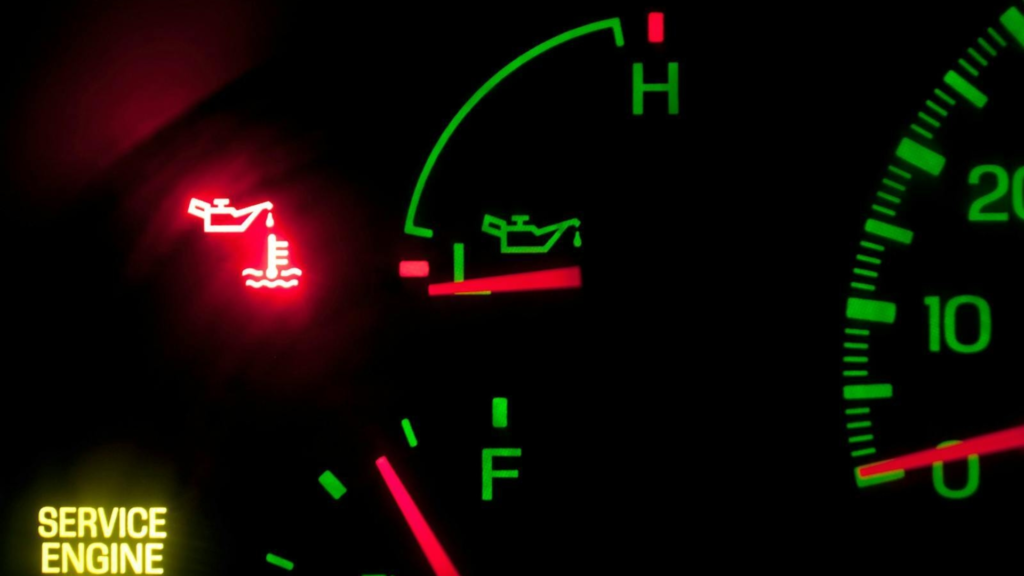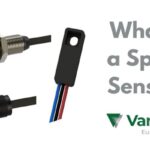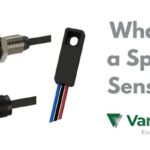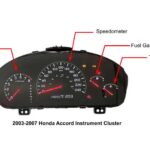
Toyota Corolla Oil Pressure Sensor Leak: Causes, Fixes & Expert Tips

- 1. Introduction
- 2. What Is an Oil Pressure Sensor and Why It Matters
- 3. Common Signs of an Oil Pressure Sensor Leak
- 4. Why the Oil Pressure Sensor on a Toyota Corolla Leaks
- 5. Identifying the Source of the Leak
- 6. How to Fix an Oil Pressure Sensor Leak
- 7. Step-by-Step Replacement Guide
- 8. Preventing Future Leaks
- 9. How Much Does It Cost to Fix
- 10. When to See a Mechanic
- 11. Final Thoughts
- 12. FAQs
1. Introduction
Ever spotted a small oil puddle under your car and thought, “Well, that can’t be good”? If you own a Toyota Corolla, one of the most common culprits could be a leaking oil pressure sensor. While it might sound like a minor issue, ignoring it can lead to major engine problems down the road.
In this guide, we’ll break down what this sensor does, why it leaks, how to fix it, and how to prevent it from happening again. Buckle up—this is your one-stop guide to oil pressure sensor leaks!
2. What Is an Oil Pressure Sensor and Why It Matters
The oil pressure sensor is like your car’s personal health monitor for the engine’s oil system. It keeps track of oil pressure and alerts you if things go south.
2.1 How the Oil Pressure Sensor Works
This small but mighty component sends signals to your dashboard to warn you if oil pressure drops below a safe level. It’s the reason your oil light flashes when something’s wrong.
2.2 The Role It Plays in Your Engine’s Health
Without proper oil pressure, your engine won’t get the lubrication it needs. Think of it as your car’s lifeblood. If the sensor is leaking or faulty, your engine might not receive accurate warnings, which can lead to serious damage.
3. Common Signs of an Oil Pressure Sensor Leak
Spotting a leak early can save you a lot of stress—and cash. Here are the telltale signs.
3.1 Oil Spots Under the Car
The most obvious clue is a small pool or drip of oil under the vehicle, usually toward the engine bay.
3.2 Warning Light on the Dashboard
A leaky sensor might give off false low-pressure readings, triggering the oil light even when the oil level is fine.
3.3 Burning Oil Smell
If oil leaks onto hot engine components, you may notice a burnt oil smell—a clear sign that something’s wrong.
4. Why the Oil Pressure Sensor on a Toyota Corolla Leaks
Not all leaks are created equal. Here’s why your oil pressure sensor might be the source.
4.1 Age and Wear
Just like any other component, the sensor can wear out over time—especially in older Corollas.
4.2 Faulty O-Rings or Seals
A worn or damaged O-ring is one of the most common causes of leaks. If the seal isn’t tight, oil will find its way out.
You may be interested in reading 1999 Toyota Camry Speedometer Not Working: Causes and Solutions
1999 Toyota Camry Speedometer Not Working: Causes and Solutions4.3 Cracked Sensor Housing
Physical damage or exposure to high heat can cause the sensor’s housing to crack, leading to slow leaks.
4.4 High Oil Pressure Issues
Sometimes, the problem isn’t the sensor itself but high oil pressure pushing oil through weak spots.
5. Identifying the Source of the Leak
Before you grab your tools, you need to confirm the sensor is indeed the leaky culprit.
5.1 Visual Inspection
Pop the hood and use a flashlight to check the area around the oil pressure sensor. Look for fresh oil buildup.
5.2 Using a UV Dye or Leak Detection Tool
Adding a UV dye to your oil can make finding leaks a breeze. Under a UV light, the source will glow, pointing you directly to the problem.
5.3 Verifying the Oil Pressure Sensor Location
On most Toyota Corolla models, the sensor is typically located near the oil filter or behind the engine block. Check your owner’s manual for the exact location.
6. How to Fix an Oil Pressure Sensor Leak
Good news—it’s often an easy fix!
6.1 Replacing the O-Ring or Seal
If the seal is worn out, replacing it may stop the leak without replacing the whole sensor.
6.2 Tightening the Sensor Correctly
Sometimes, the sensor is just loose. Gently tightening it (without overdoing it) can solve the problem.
6.3 Replacing the Sensor Itself
If the sensor is cracked or faulty, swapping it for a new one is the best move.
7. Step-by-Step Replacement Guide
If you’re handy with basic tools, you can replace the oil pressure sensor yourself. Here’s how.
7.1 Tools You’ll Need
- Ratchet and socket set
- Replacement oil pressure sensor
- O-ring or seal (if needed)
- Oil catch pan
- Thread sealant or Teflon tape (if required)
- Clean rags
7.2 Preparing the Vehicle
- Park the car on a flat surface.
- Allow the engine to cool completely.
- Disconnect the negative battery cable to prevent accidental shorts.
7.3 Removing the Old Sensor
- Locate the sensor and clean the area around it.
- Place the oil catch pan underneath.
- Disconnect the sensor’s electrical connector.
- Use a socket wrench to carefully remove the sensor.
7.4 Installing the New Sensor
- Apply thread sealant to the threads of the new sensor if recommended.
- Hand-tighten first, then use the ratchet to secure it snugly (not too tight!).
- Reconnect the electrical connector.
7.5 Refilling and Checking Oil
- Refill any lost oil if needed.
- Start the engine and check for leaks.
- Make sure the oil light turns off as it should.
8. Preventing Future Leaks
Prevention is always better than cure, especially when it comes to oil leaks.
You may be interested in reading 1999 Toyota Camry Speedometer Not Working: Causes and Solutions
1999 Toyota Camry Speedometer Not Working: Causes and Solutions 2009 Toyota Camry Speedometer Not Working
2009 Toyota Camry Speedometer Not Working8.1 Routine Maintenance
Regular oil changes and inspections keep your engine and its components in good shape.
8.2 Checking for Early Warning Signs
A quick visual check during every oil change can help catch small leaks before they turn big.
8.3 Using Quality Parts
Cheap sensors might save money short-term but can fail faster. Investing in quality parts pays off.
9. How Much Does It Cost to Fix
Let’s talk numbers—because repairs shouldn’t be a guessing game.
9.1 DIY vs Professional Repair Costs
- DIY: $20 to $80 (mostly for the part itself).
- Professional: $100 to $250, depending on labor rates and location.
9.2 Cost of Replacement Parts
A new oil pressure sensor typically costs between $20 and $60, depending on the model year of your Corolla.
10. When to See a Mechanic
If tightening or replacing the sensor doesn’t stop the leak—or if the oil light remains on—it’s time to see a pro. A mechanic can check for underlying issues like oil pressure problems or engine damage.
11. Final Thoughts
An oil pressure sensor leak on your Toyota Corolla isn’t something to ignore, but it’s also not the end of the world. Most of the time, it’s a simple and affordable fix. By catching the issue early and following proper maintenance practices, you can keep your Corolla running smoothly for years to come.
12. FAQs
1. How do I know if my oil pressure sensor is leaking?
You might notice oil spots under your car, a warning light on the dash, or a burning oil smell.
2. Can I drive with a leaking oil pressure sensor?
Technically yes, but it’s risky. Leaks can get worse, and false readings can mask bigger issues.
3. How long does it take to replace the sensor?
For most DIYers, about 30 to 60 minutes. A mechanic can usually do it even faster.
4. Do I need special tools to replace it?
No, just basic hand tools like a socket wrench set and an oil catch pan.
5. Will replacing the sensor fix the oil light issue?
If the sensor was the cause, yes. But if the light persists, you might have a deeper oil pressure problem that needs inspection.
You may be interested in reading 1999 Toyota Camry Speedometer Not Working: Causes and Solutions
1999 Toyota Camry Speedometer Not Working: Causes and Solutions 2009 Toyota Camry Speedometer Not Working
2009 Toyota Camry Speedometer Not Working 2007 Toyota Camry Speedometer Not Working: Common Issues and Solutions
2007 Toyota Camry Speedometer Not Working: Common Issues and SolutionsIf you want to know other articles similar to Toyota Corolla Oil Pressure Sensor Leak: Causes, Fixes & Expert Tips you can visit the category Common Problems.
Deja una respuesta






More content of your interest